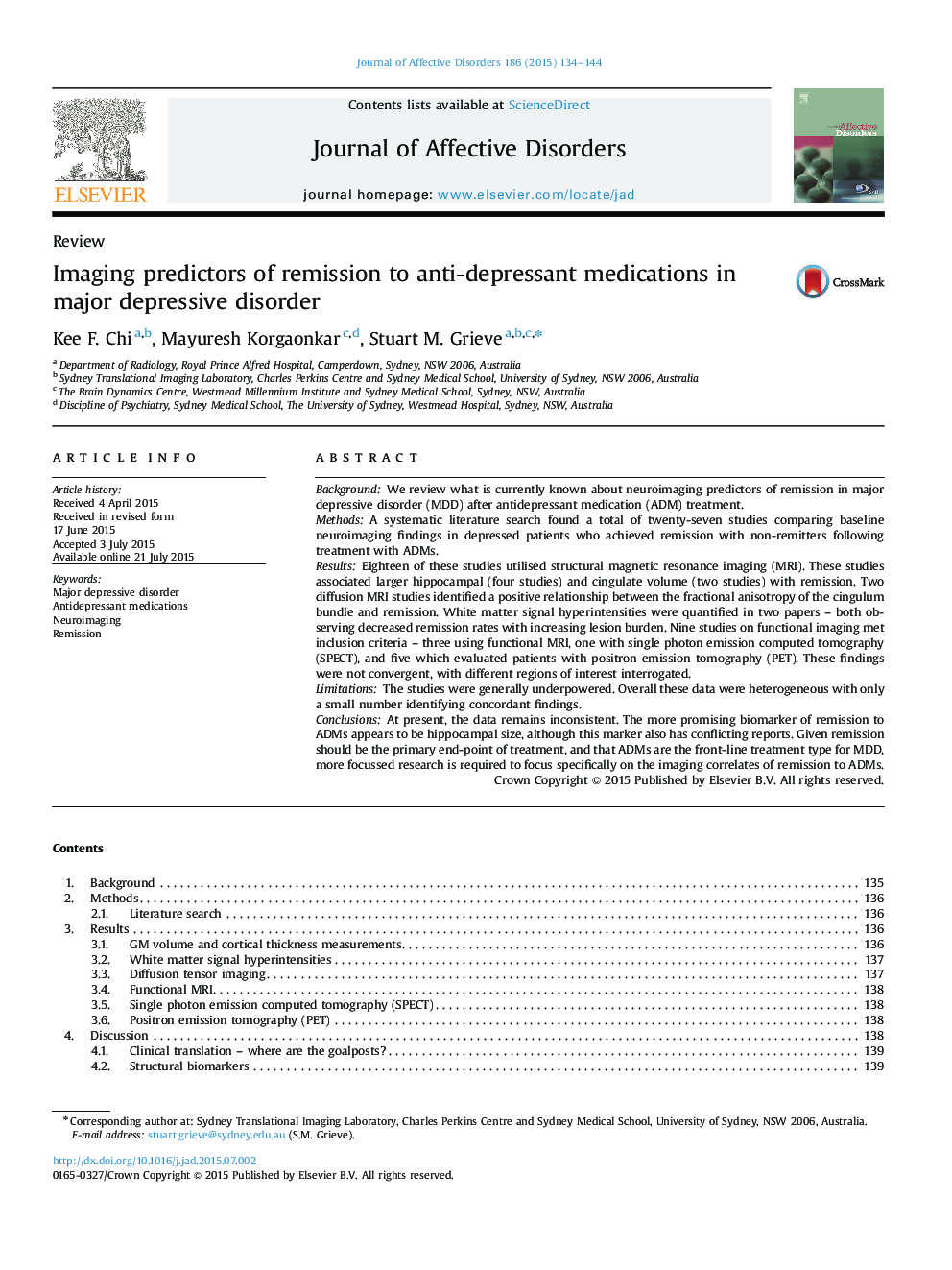| کد مقاله | کد نشریه | سال انتشار | مقاله انگلیسی | نسخه تمام متن |
|---|---|---|---|---|
| 6231145 | 1608139 | 2015 | 11 صفحه PDF | دانلود رایگان |
- A literature search was made for imaging predictors of remission to antidepressants.
- 27 studies met inclusion criteria: 18 structural and 9 functional neuroimaging.
- 4 structural studies associated larger hippocampi with increased remission rates.
- The functional studies had diverse regions of interest, with no concordant results.
- Further research is required to establish more robust neuroimaging predictors.
BackgroundWe review what is currently known about neuroimaging predictors of remission in major depressive disorder (MDD) after antidepressant medication (ADM) treatment.MethodsA systematic literature search found a total of twenty-seven studies comparing baseline neuroimaging findings in depressed patients who achieved remission with non-remitters following treatment with ADMs.ResultsEighteen of these studies utilised structural magnetic resonance imaging (MRI). These studies associated larger hippocampal (four studies) and cingulate volume (two studies) with remission. Two diffusion MRI studies identified a positive relationship between the fractional anisotropy of the cingulum bundle and remission. White matter signal hyperintensities were quantified in two papers - both observing decreased remission rates with increasing lesion burden. Nine studies on functional imaging met inclusion criteria - three using functional MRI, one with single photon emission computed tomography (SPECT), and five which evaluated patients with positron emission tomography (PET). These findings were not convergent, with different regions of interest interrogated.LimitationsThe studies were generally underpowered. Overall these data were heterogeneous with only a small number identifying concordant findings.ConclusionsAt present, the data remains inconsistent. The more promising biomarker of remission to ADMs appears to be hippocampal size, although this marker also has conflicting reports. Given remission should be the primary end-point of treatment, and that ADMs are the front-line treatment type for MDD, more focussed research is required to focus specifically on the imaging correlates of remission to ADMs.
Journal: Journal of Affective Disorders - Volume 186, 1 November 2015, Pages 134-144
